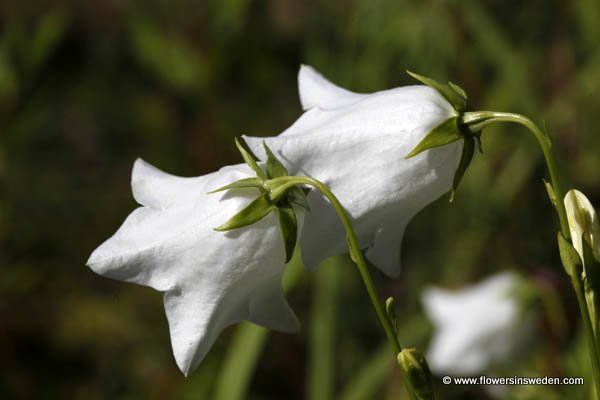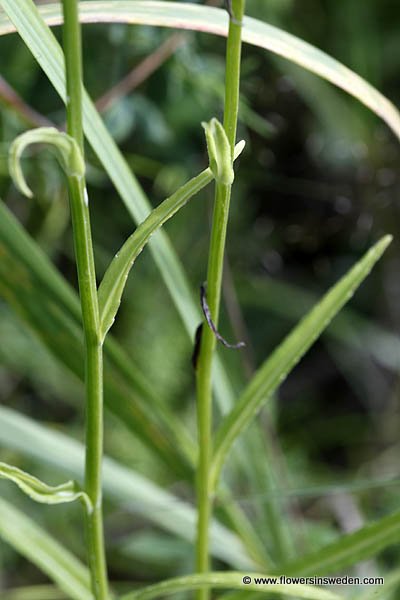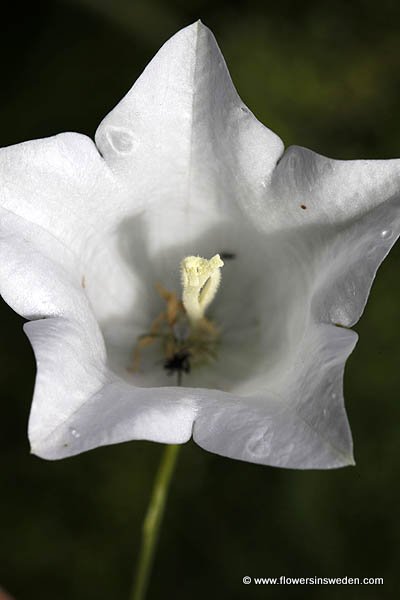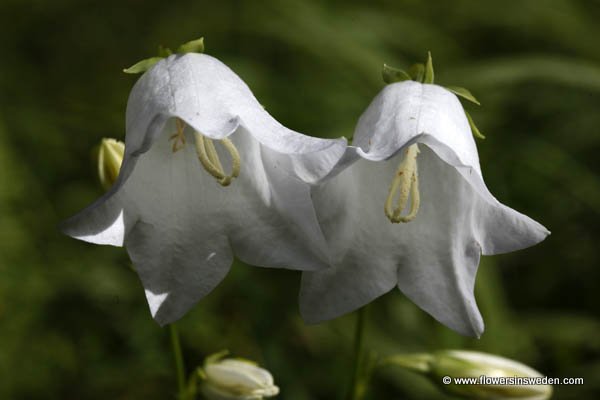|
|
| Life form: |
| Perennial herb |
| Stems: |
| 30-70 cm, erect, usually unbranched |
| Leaves: |
| Basal rosette, opposite, lanceolate, toothed margins |
| Inflorescence: |
| Terminal and axillary racemes atop erect, unbranched, leafy stems |
| Flowers: |
| Hermaphrodite, blue or white bell-shaped corolla; long stigmas, often about a centimeter |
| Flowering Period: |
| July, August |
| Fruits: |
| Poricidal capsules, ovoid, 3-grooved; capsule is upward |
| Habitat: |
| Open fields, meadows, forests |
| Distribution: |
| from Skåne to Uppland |

Derivation of the botanical name:
Campanula is diminutive of Late Latin campāna, bell (New Latin: a little bell).
persicifolia, Latin Persica and folia, a leaf ; with leaves like a peach.
- The standard author abbreviation L. is used to indicate Carl Linnaeus (1707 – 1778), a Swedish botanist, physician, and zoologist, the father of modern taxonomy.


|




